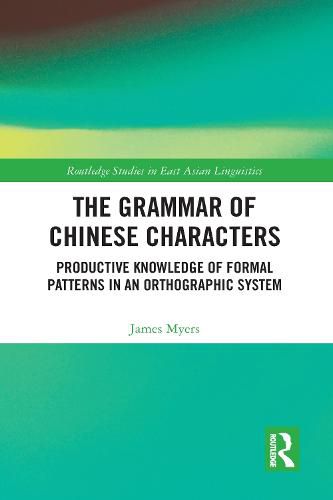Readings Newsletter
Become a Readings Member to make your shopping experience even easier.
Sign in or sign up for free!
You’re not far away from qualifying for FREE standard shipping within Australia
You’ve qualified for FREE standard shipping within Australia
The cart is loading…






Anybody who reads or writes Chinese characters knows that they obey a grammar of sorts: though numerous, they are built out of a much smaller set of constituents, often interpretable in meaning or pronunciation, that are themselves built out of an even smaller set of strokes. This book goes far beyond these basic facts to show that Chinese characters truly have a productive and psychologically real lexical grammar of the same sort seen in spoken and signed languages, with non-trivial analogs of morphology (the combination of potentially interpretable constituents), phonology (formal regularities without implications for interpretation), and phonetics (articulatory and perceptual constraints). Evidence comes from a wide variety of sources, from quantitative corpus analyses to experiments on character reading, writing, and learning. The grammatical approach helps capture how character constituents combine as they do, how strokes systematically vary in different environments, how character form evolved from ancient times to the modern simplified system, and how readers and writers are able to process or learn even entirely novel characters. This book not only provides tools for exploring the full richness of Chinese orthography, but also offers new ways of thinking about the most fundamental question in linguistic theory: what is grammar?
$9.00 standard shipping within Australia
FREE standard shipping within Australia for orders over $100.00
Express & International shipping calculated at checkout
Anybody who reads or writes Chinese characters knows that they obey a grammar of sorts: though numerous, they are built out of a much smaller set of constituents, often interpretable in meaning or pronunciation, that are themselves built out of an even smaller set of strokes. This book goes far beyond these basic facts to show that Chinese characters truly have a productive and psychologically real lexical grammar of the same sort seen in spoken and signed languages, with non-trivial analogs of morphology (the combination of potentially interpretable constituents), phonology (formal regularities without implications for interpretation), and phonetics (articulatory and perceptual constraints). Evidence comes from a wide variety of sources, from quantitative corpus analyses to experiments on character reading, writing, and learning. The grammatical approach helps capture how character constituents combine as they do, how strokes systematically vary in different environments, how character form evolved from ancient times to the modern simplified system, and how readers and writers are able to process or learn even entirely novel characters. This book not only provides tools for exploring the full richness of Chinese orthography, but also offers new ways of thinking about the most fundamental question in linguistic theory: what is grammar?